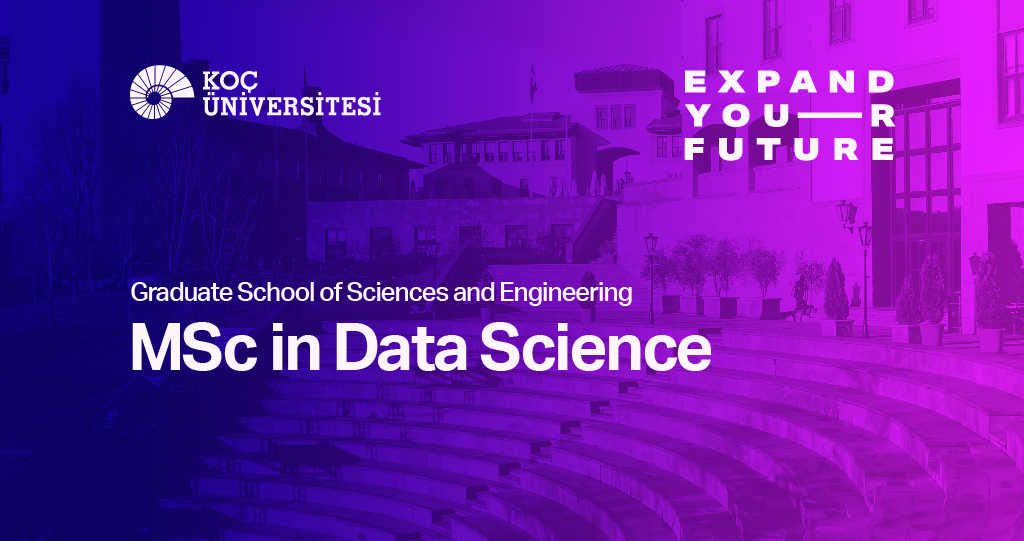Data Science

Now in the pandemic era, more of us than ever before are dependent on apps and virtual services to learn, work, socialize, eat, relax, and connect.
The ability to make sense of this data, foresee commercial or socially valuable applications, and communicate insights are fast becoming the world’s most sought-after skills.
The Koç University Data Science graduate program provides the training, experience, and tools necessary to succeed in today’s data-driven workplace.
- Challenging
- For STEM graduates
- Online/Offline
- 3-semesters
- Affordable tuition
The MSc in Data Science program at Koç University will give you:
- a foundation in computational science and machine learning
- options to specialize in advanced methods such as distributed systems, visual recognition, deep learning, neural networks, and many others
- flexibility to gain your degree online if required
- an internationally competitive degree that is recognized by employers worldwide
The Graduate School of Sciences and Engineering is looking for outstanding students in mathematics, computer science, and computer engineering to join Koç University’s new MSc in Data Science program. The program is also ideal for finance and engineering professionals who want to join one of the fastest-growing employment sectors.
Faculty members are on the lookout for driven candidates who can demonstrate familiarity or experience with programming languages and have a solid grasp of university-level mathematics. For more details make sure you watch our webinars below!
- CV
- Motivation Letter
- 2 Recommendation Letters
- Transcripts from all university degree(s) completed
- University diploma from all university degree(s) completed (if available)
- English proficiency test score (for applicants who are not native English speakers)
We offer rolling admissions. Decisions are announced within 2 weeks of receipt of the application. For more details click here and make sure you watch our webinars.
- The MSc Data Science tuition fee at Koç University is 135.000 TL (one hundred thirty five thousand Turkish Lira) or 9.800 $ (nine thousand and eight hundred USD) for the 2022-23 academic year
- Tuition is paid in Turkish Lira by national admitted students (TC citizenship) and in US Dollars (USD) by international admitted students (Non-TC citizenship)
- The tuition fee covers the three-semesters of education
- Koç University graduates receive a 25% discount on the tuition fee
- There are no full scholarships (100%) available for this program for external candidates
Master’s Perspective Asst. Prof. Barış Akgün, Data Science







